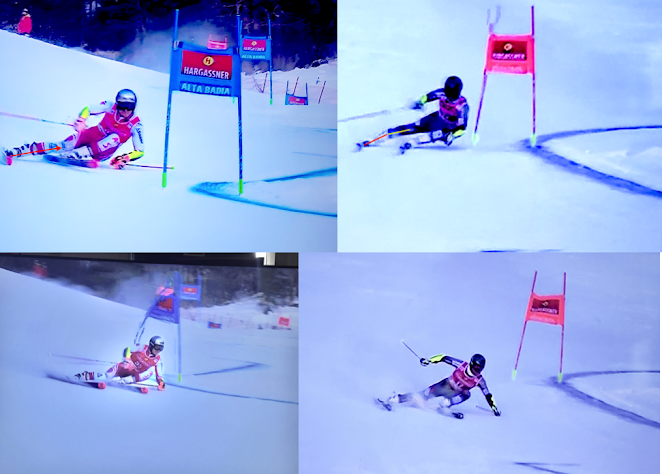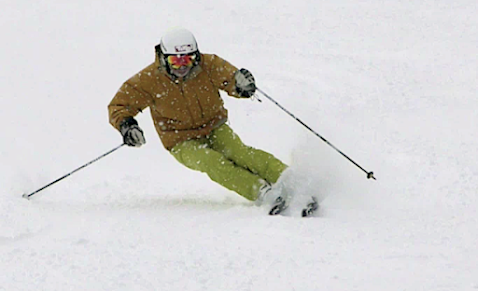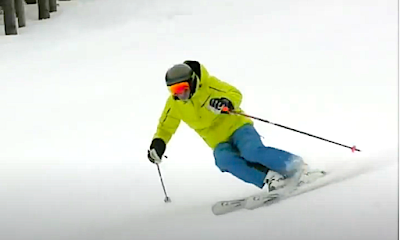If "Carving" is one of the things you want to achieve in your skiing, then "Counteracting is a big contributor to that skill. In this post, I define some of the key ways to learn how to achieve and develop CA.
The Yellow line curve is the arc of the turn. The two blue arcs are movements you make while in the arc, starting at the top of the arc and moving the arm and hand forward toward the tip of the ski until the end of the turn.
Notice the ski pole tip is also moving downhill and in a circle as much or in advance of the skis coming through the arc.
When you begin to learn how to use counteracting it may not work its way down to your hips where you see the red arrows, at first. (photo above)
This is difficult for many skiers to create hip CA due to either lack of awareness or flexibility. With practice, you can increase your hip support for your turns.
The forces in a carved turn want to rotate your torso, which decreases ski angles and edge hold. This is the reason to develop CA movements. Just trying to hold a countered hip isn't enough. Counteracting, or CA is a movement, not a position.
Begin by using the pole tip, arm, and hand on the inside of the arc, to develop your CA movements through turns. Slow down, and pick a relatively flat slope to practice this. Make the movements from the top of the arc all the way to the end. This requires effort and patience, it won't happen immediately but it will pay off with great skiing if you stick with it.
















